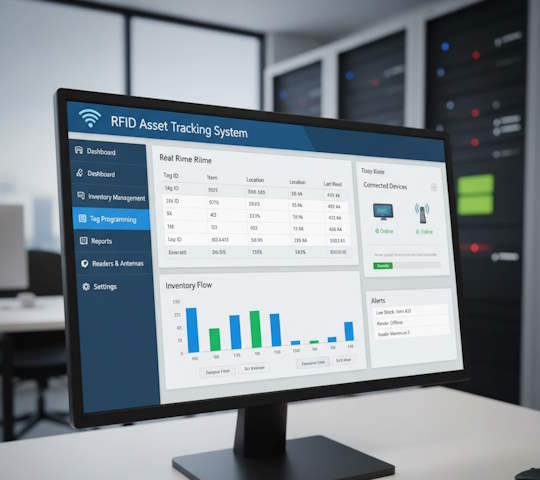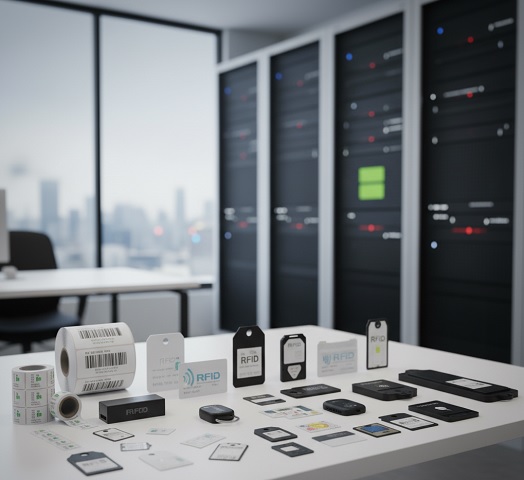RFID Applications in Gas Transportation Industry
Introduction
The global gas transportation industry faces unique challenges: managing thousands of kilometers of pipelines, millions of equipment units, and ensuring uninterrupted supply under extreme temperature and pressure conditions. Traditional tracking methods based on paper documentation and manual inspections demonstrate inefficiency, becoming sources of errors and potential risks.
RFID (Radio Frequency Identification) technology offers a paradigm shift, transforming every pipe section, valve, or liquefied gas cylinder into an intelligent asset with a digital passport. According to international experience analysis, RFID implementation in the gas industry reduces operational costs by 25–30% and increases asset tracking accuracy to 99.8%.
Technological Foundations of RFID for the Gas Industry
Modern RFID systems for gas transportation are based on the international standard EPCglobal UHF Class 1 Gen 2 (ISO/IEC 18000-63), ensuring compatibility between equipment from different global manufacturers.
Key system components
-
Specialized RFID Tags
-
Heat-resistant tags withstand refinery and drilling equipment temperatures
-
Anti-metal tags with ferrite substrates for stable reading on pipes and tanks
-
Explosion-proof tags with ATEX/IECEx certifications for hazardous zones
-
-
Industrial Readers
-
Stationary and mobile devices (Zebra Technologies, Siemens)
-
Operational range: -50°C to +50°C
-
-
Software
-
Integration platforms compatible with ERP and asset management systems
-
Key Implementation Areas in Gas Transportation
1. Gas Cylinder and Container Management
RFID enables full lifecycle control of liquefied petroleum gas (LPG) cylinders:
-
Preventing illegal refilling through unique digital IDs
-
Tracking inspection schedules and maintenance periods
-
Monitoring each cylinder from production to consumer
📌 Case: In Texas, the use of “smart valves” with embedded RFID chips enabled 100% traceability and enhanced household safety.
2. Pipeline Infrastructure Monitoring and Maintenance
RFID supports predictive and preventive maintenance of pipeline systems:
-
Tracking valves, compressors, and other components
-
Maintaining digital passports with repair history
-
Using operational data for predictive maintenance
Comparison Table: Traditional vs RFID in Gas Industry
| Parameter | Traditional Methods | RFID System |
|---|---|---|
| Asset Data Accuracy | 85–90% | 99.5–99.8% |
| Inventory Time | Weeks | Hours |
| Equipment Loss Rate | 5–8% | 0.5–1% |
| Insurance Costs | 4–6% of revenue | 1–2% of revenue |
| Maintenance Schedule Compliance | 75–80% | 95–98% |
3. Safety Enhancement and Compliance
RFID contributes directly to operational safety in hazardous environments:
-
Access control to critical zones and equipment
-
Tracking PPE (personal protective equipment) and fire gear
-
Automated alerts for expired or uncertified equipment
📌 Example: HID Global confirms their RFID solutions help oil & gas clients meet strict international safety standards.
Financial Justification and Benefits
-
25–40% reduction in operational expenses
-
15–20% extension of equipment lifespan
-
30–50% reduction in downtime via predictive analytics
-
20–35% labor productivity increase through automation
Practical Implementation Examples
Saipem Offshore Platforms
-
RFID tracking of large-diameter pipes and buoys
-
Conditions: seawater, steel, extreme temperatures (-50°C to +50°C)
-
Explosion-proof tags achieved nearly 100% accuracy and improved personnel safety
German Gas Cylinder Modernization Program
-
Replacement of valves with RFID-enabled smart valves
-
Prevented illegal emptying and losses
-
Improved end-consumer safety significantly
Future Development and Prospects
The next phase of RFID in the gas industry integrates with advanced technologies:
-
IoT sensors for real-time pressure and temperature monitoring
-
Digital twins with complete lifecycle data
-
Blockchain for immutable maintenance and inspection records
-
Machine learning for predictive failure analysis
Conclusion
RFID in the gas transportation industry is no longer experimental — it is becoming a standard of digital transformation. By ensuring transparency, predictive maintenance, and safety compliance, RFID offers measurable cost reduction and operational efficiency.
Amid growing environmental regulations and safety demands, RFID is set to become a cornerstone of competitiveness and risk management in the gas sector.
FAQ: Frequently Asked Questions
1. How does RFID improve safety in the gas industry?
It ensures traceability of cylinders, controls access to hazardous zones, and tracks PPE to reduce risks.
2. Can RFID withstand extreme industrial conditions?
Yes, explosion-proof and heat-resistant tags operate in -50°C to +200°C ranges.
3. What are the costs of RFID implementation?
A pilot project for gas cylinder management typically ranges from $30,000 to $100,000 depending on scale.
4. Are RFID systems compatible with existing ERP solutions?
Most platforms integrate seamlessly with SAP, Oracle, and other enterprise systems.
5. Can RFID prevent illegal LPG refilling?
Yes, each cylinder receives a unique ID, making unauthorized refilling traceable.
6. Which vendors provide RFID for gas industry?
Impinj, Honeywell, Zebra Technologies, Siemens, and HID Global.
7. What is the ROI of RFID in gas transportation?
Companies report ROI in 1–2 years due to savings on losses, insurance, and downtime.
Authoritative Sources
SEO Recommendations
-
Title: RFID for Gas Transportation: Safety & Efficiency Solutions
-
Meta Description:
-
H1: RFID Applications in Gas Transportation Industry
Keywords:
Alt-texts for images:
-
RFID reader (Zebra Technologies) installed on a gas pipeline
-
Heat-resistant Honeywell RFID tag on valve
-
Technician scanning gas cylinder with handheld RFID device
-
RFID system monitoring scheme in gas transportation
-
Asset management software dashboard with RFID data
-
Siemens explosion-proof RFID tag in hazardous environment




